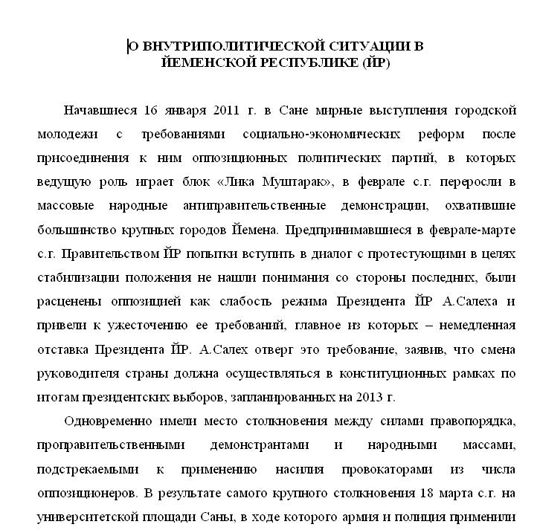TROJ_DLODR.TMP
Windows 2000, Windows XP, Windows Server 2003


Threat Type: Trojan
Destructiveness: No
Encrypted: No
In the wild: Yes
OVERVIEW
This Trojan arrives as an attachment to email messages spammed by other malware/grayware or malicious users. It may arrive bundled with malware packages as a malware component. It may be unknowingly downloaded by a user while visiting malicious websites.
It bears the file icons of certain applications to avoid easy detection and consequent removal.
It executes the downloaded files. As a result, malicious routines of the downloaded files are exhibited on the affected system.
TECHNICAL DETAILS
Arrival Details
This Trojan arrives as an attachment to email messages spammed by other malware/grayware or malicious users.
It may arrive bundled with malware packages as a malware component.
It may be unknowingly downloaded by a user while visiting malicious websites.
Installation
This Trojan drops the following copies of itself into the affected system:
- %User Temp%\.exe
- %System%\2056\iissync.exe
(Note: %User Temp% is the current user's Temp folder, which is usually C:\Documents and Settings\{user name}\Local Settings\Temp on Windows 2000, XP, and Server 2003.. %System% is the Windows system folder, which is usually C:\Windows\System on Windows 98 and ME, C:\WINNT\System32 on Windows NT and 2000, or C:\Windows\System32 on Windows XP and Server 2003.)
It drops the following files:
- %Current Folder%\{russian text}.du - non malicious document
- %Windows%\config\usbscanlog.dat - non malicious
(Note: %Windows% is the Windows folder, which is usually C:\Windows or C:\WINNT.)
It bears the file icons of the following applications:
- Microsoft Word
It creates the following folders:
- %Application Data%\Microsoft Office
- %System%\2056
(Note: %Application Data% is the current user's Application Data folder, which is usually C:\Windows\Profiles\{user name}\Application Data on Windows 98 and ME, C:\WINNT\Profiles\{user name}\Application Data on Windows NT, and C:\Documents and Settings\{user name}\Local Settings\Application Data on Windows 2000, XP, and Server 2003.. %System% is the Windows system folder, which is usually C:\Windows\System on Windows 98 and ME, C:\WINNT\System32 on Windows NT and 2000, or C:\Windows\System32 on Windows XP and Server 2003.)
It adds the following mutexes to ensure that only one of its copies runs at any one time:
- LLHTTPSCA
Other System Modifications
This Trojan modifies the following registry entries:
HKEY_LOCAL_MACHINE\SOFTWARE\Microsoft\
Windows\CurrentVersion\Explorer\
Shell Folders
Common Startup = %System%\2056
(Note: The default value data of the said registry entry is %Start Menu%\Programs\Startup.)
HKEY_LOCAL_MACHINE\SOFTWARE\Microsoft\
Windows\CurrentVersion\Explorer\
User Shell Folders
Common Startup = %System%\2056
(Note: The default value data of the said registry entry is %Start Menu%\Programs\Startup.)
Download Routine
This Trojan connects to the following URL(s) to download its component file(s):
- press.{BLOCKED}e-helppane.com
- press.{BLOCKED}x-pro.com
- press.{BLOCKED}l-pro.com
It then executes the downloaded files. As a result, malicious routines of the downloaded files are exhibited on the affected system.
NOTES:
Initially, it creates a temporary file, %User Temp%\tmp{random}.EXE then renames it to %User Temp%\.EXE.
The temporary file is deleted and the new copy is then executed. It also creates a non malicious document in the current directory, then attempts to open it.
When translated in English, its file name says:
- About the political situation in Yemen (reference)
Below is a screenshot of the document:

Download Routine
Currently, the malware was unable to download other files.
Other Details
This malware finds the following location and executes all .EXE and .BAT files found:
- %Application Data%\Microsoft Office
It also copies the contents of the Startup folder %Start Menu%\Programs\Startup to %System%\2056 so that the user does not suspect any changes to the startup settings.
The malware may be bundled with other files such as %System%\tracert.DLL since it is trying to locate this file before doing some of its routines.
SOLUTION
Step 1
For Windows XP and Windows Server 2003 users, before doing any scans, please make sure you disable System Restore to allow full scanning of your computer.
Step 2
Identify and terminate files detected as TROJ_DLODR.TMP
- If the detected file is displayed in either Windows Task Manager or Process Explorer but you cannot delete it, restart your computer in safe mode. To do this, refer to this link for the complete steps.
- If the detected file is not displayed in either Windows Task Manager or Process Explorer, continue doing the next steps.
Step 3
Restore this modified registry value
Important: Editing the Windows Registry incorrectly can lead to irreversible system malfunction. Please do this step only if you know how or you can ask assistance from your system administrator. Else, check this Microsoft article first before modifying your computer's registry.
- In HKEY_LOCAL_MACHINE\SOFTWARE\Microsoft\Windows\CurrentVersion\Explorer\Shell Folders
- From: Common Startup = %System%\2056
To: Common Startup = %Start Menu%\Programs\Startup
- From: Common Startup = %System%\2056
- In HKEY_LOCAL_MACHINE\SOFTWARE\Microsoft\Windows\CurrentVersion\Explorer\User Shell Folders
- From: Common Startup = %System%\2056
To: Common Startup = %Start Menu%\Programs\Startup
- From: Common Startup = %System%\2056
Step 4
Search and delete this file
Step 5
Search and delete these folders
Step 6
Scan your computer with your Trend Micro product to delete files detected as TROJ_DLODR.TMP. If the detected files have already been cleaned, deleted, or quarantined by your Trend Micro product, no further step is required. You may opt to simply delete the quarantined files. Please check this Knowledge Base page for more information.
Did this description help? Tell us how we did.

